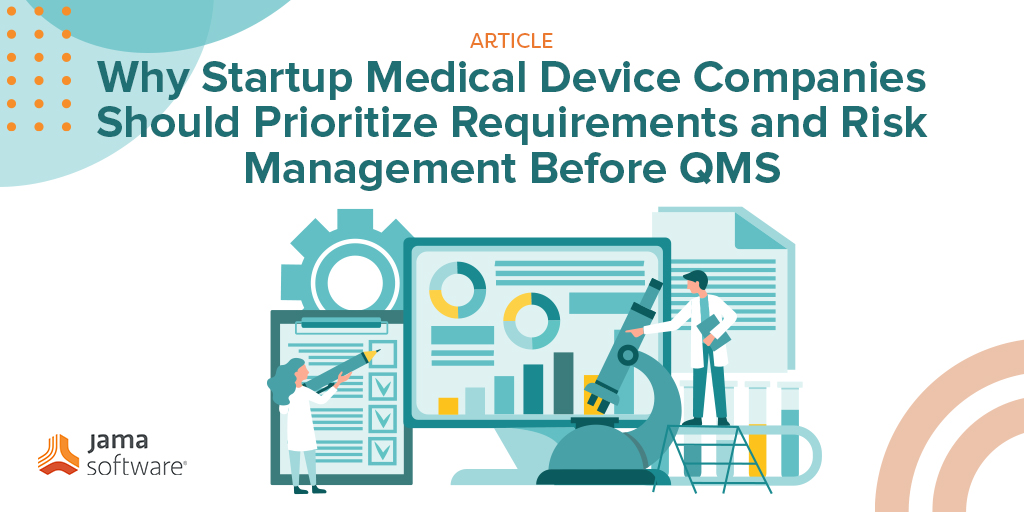
In this post, we will discuss why start-up medical device companies should prioritize requirements and risk management before a quality management system.
As a medical device product development consultant, I often see start-up companies having trouble deciding what to prioritize – design controls and risk management or the quality management system (QMS). And what they mean specifically is, which software systems should the company invest in first – the requirements and risk management solution that will aid in building a regulatory compliant design history file, or the electronic-QMS system to establish the FDA required and ISO 13485-compliant QMS?
From my experience over the past 15 years, here are the 3 reasons why I advise start-ups to prioritize requirements and risk management over an eQMS system.
1. Design controls and risk management processes start earlier
For best product, schedule, and compliance success, incorporating design controls should be done proactively instead of reactively. Companies are typically developing their medical device from day 1. This is compared to other QMS processes that may not be used until years later when the product is being transferred to manufacturing and being commercially distributed. A few of these other processes include non‑conforming materials, device master record, product change control, and complaint management.
Thus, purchasing a full eQMS system earlier than necessary results in paying for functionality that may not be used for years. That is of low value to the start-up closely watching its funds.
In contrast, as the medical device is being developed from the onset of the company, the benefits of requirements and risk management solutions can be realized very quickly and much sooner than a full eQMS system.
2. Requirements and risk management is often unwieldy
Unless your device is ‘simple,’ for example no software, no electro-mechanical parts, low-risk Class 1 devices; thoughtful consideration should be given to the processes and solutions that will manage the various requirements and risk management for your medical device development. Organizing all the user needs, design inputs, regulatory requirements, requirements from industry standards, system requirements, sub-requirements, and risk management can quickly become unwieldy without proper management.
In my experience, even a Class II electro-mechanical device can easily approach a thousand line items to manage and connect. Add on embedded software or a digital interface, and that number can easily jump to multiple thousands of line items or more, depending on the complexity of the medical device. A solution like Jama Connect® has immediate value to ensure all items are linked, traced, verified, and validated for a regulatory complaint design history file and medical device file.
3. In the early years, a company can create and manage a regulatory compliant QMS without an all-electronic system
Does forgoing the eQMS mean settling with a non-compliant QMS? No. A company can implement a regulatory compliant QMS without an eQMS system. SOPs can be implemented in stages, prioritized on the stage of the company. These SOPs, along with a cloud-based document sharing repository, is often sufficient in those early product development years. As the company approaches transfer to manufacturing and commercial distribution, then is the time to evaluate whether it’s time to transition to an eQMS system.
Summary
In summary, these are the three reasons I advise start-ups to prioritize requirements and risk management first before an eQMS system. This path allows for the development of a successful product and complaint design history file, as well as establishing the rest of the quality management system, all in a practical manner that maximizes value and meets regulatory expectations.